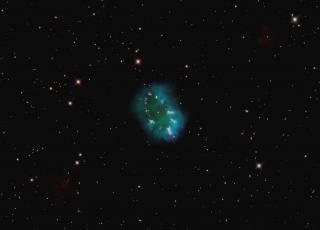Bibcode
Sale, Stuart E.; Drew, J. E.; Unruh, Y. C.; Irwin, M. J.; Knigge, C.; Phillipps, S.; Zijlstra, A. A.; Gänsicke, B. T.; Greimel, R.; Groot, P. J.; Mampaso, A.; Morris, R. A. H.; Napiwotzki, R.; Steeghs, D.; Walton, N. A.
Bibliographical reference
Monthly Notices of the Royal Astronomical Society, Volume 392, Issue 2, pp. 497-513.
Advertised on:
1
2009
Citations
77
Refereed citations
66
Description
We present an algorithm (MEAD, for `Mapping Extinction Against
Distance') which will determine intrinsic (r' - i') colour, extinction,
and distance for early-A to K4 stars extracted from the IPHAS
r'/i'/Hα photometric data base. These data can be binned up to map
extinction in three dimensions across the northern Galactic plane. The
large size of the IPHAS data base (~200 million unique objects), the
accuracy of the digital photometry it contains and its faint limiting
magnitude (r' ~ 20) allow extinction to be mapped with fine angular (~10
arcmin) and distance (~ 0.1 kpc) resolution to distances of up to 10
kpc, outside the solar circle. High reddening within the solar circle on
occasion brings this range down to ~2 kpc. The resolution achieved, both
in angle and depth, greatly exceeds that of previous empirical 3D
extinction maps, enabling the structure of the Galactic Plane to be
studied in increased detail. MEAD accounts for the effect of the survey
magnitude limits, photometric errors, unresolved interstellar medium
(ISM) substructure and binarity. The impact of metallicity variations,
within the range typical of the Galactic disc is small. The accuracy and
reliability of MEAD are tested through the use of simulated photometry
created with Monte Carlo sampling techniques. The success of this
algorithm is demonstrated on a selection of fields and the results are
compared to the literature.
Related projects

Bipolar Nebulae
This project has three major objectives: 1) To determine the physico-chemical characteristics of bipolar planetary nebulae and symbiotic nebulae, to help understanding the origin of bipolarity and to test theoretical models, mainly models with binary central stars, aimed at explaining the observed morphology and kinematics. 2) To study the low
Antonio
Mampaso Recio